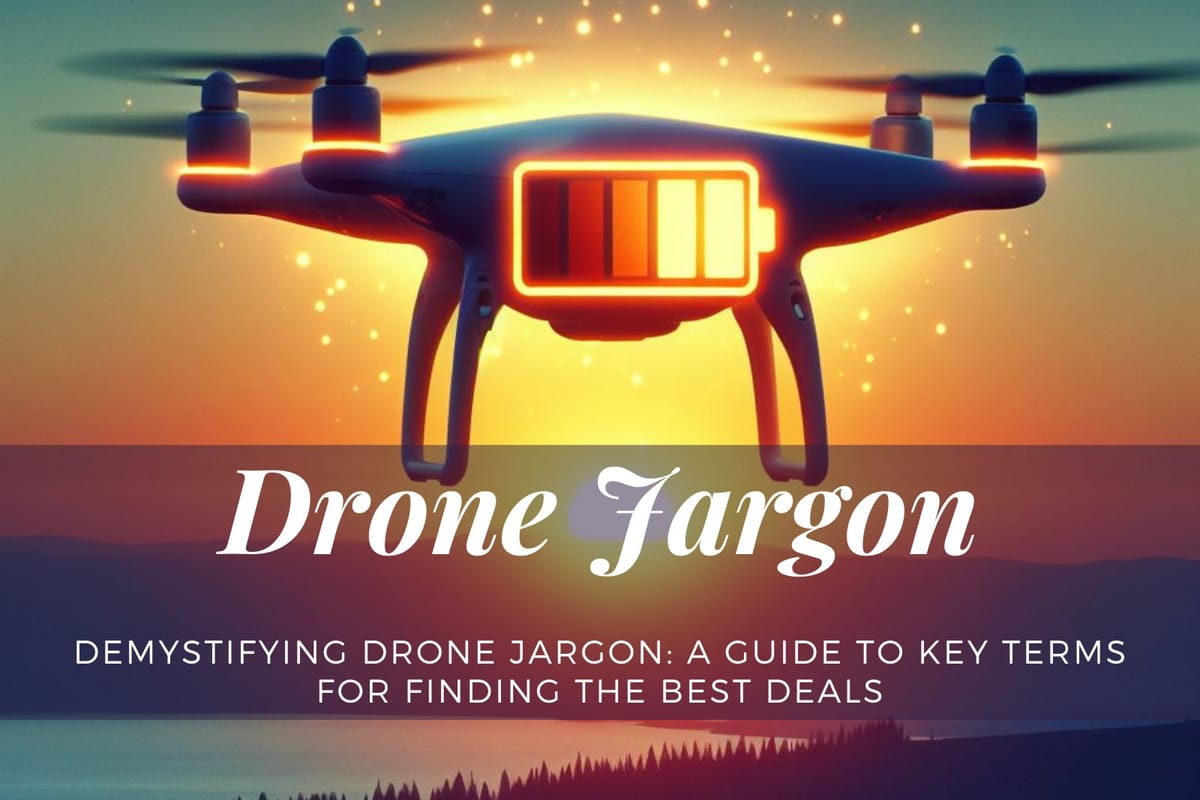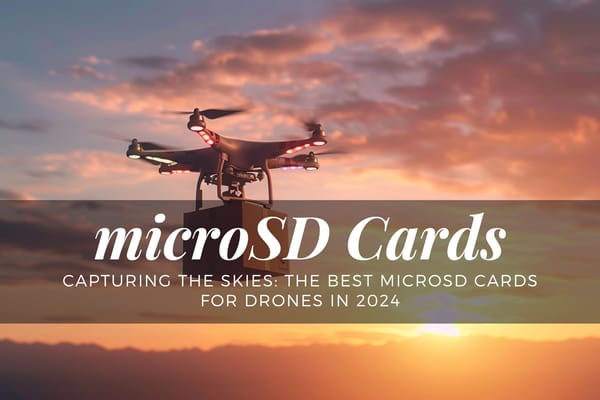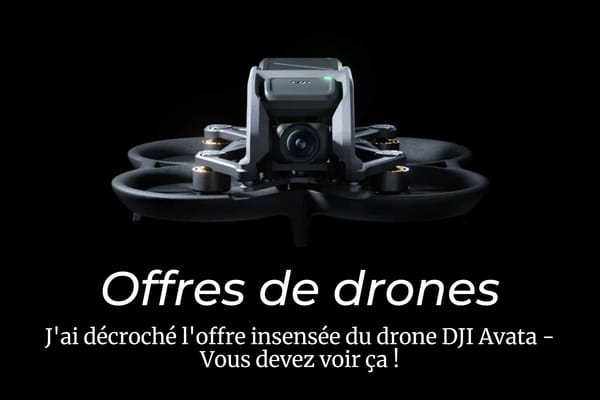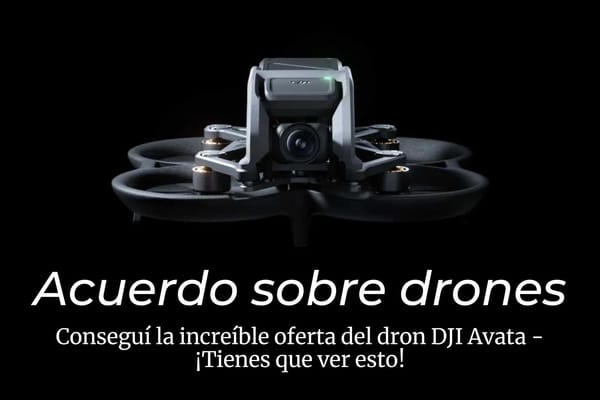Demystifying Drone Jargon: A Guide to Key Terms for Finding the Best Deals

Drones have revolutionized the way we capture the world from above, offering stunning aerial perspectives that were once the domain of professional filmmakers. However, stepping into the world of drones can be overwhelming, especially with the technical drone jargon that accompanies these high-flying devices. Understanding key terms is crucial, not just for the seasoned drone enthusiast but also for the novice looking to make an informed purchase. Whether you're eyeing the latest DJI Mavic 3 Pro deals or just starting out, this guide will help demystify essential drone terminology and make sense of drone jargon for better purchasing decisions.
Key Takeaways
- Drone Flight Time: Average flight time is around 30 minutes, varying by model.
- Camera Resolution: Higher resolution provides more detail; 4K is standard, but higher resolutions like 5.2K and 6K exist.
- Gimbal: Essential for stable footage, particularly in challenging conditions.
- Obstacle Avoidance: Uses sensors for safer flight, preventing collisions.
Drone Jargon
Table of Contents
- Introduction
- Key Takeaways
- Understanding Drone Flight Time
- Camera Resolution in Drones
- The Role of Gimbals in Drones
- Navigating Obstacle Avoidance
- Glossary of Essential Drone Terms
- FAQs
- Conclusion
Key Takeaways
- Flight Time: The duration a drone can stay airborne on a single charge; crucial for planning your shoots.
- Camera Resolution: Determines the clarity and detail of your drone footage; higher resolution means better quality.
- Gimbal: A stabilization system for smooth and steady drone footage.
- Obstacle Avoidance: Technology that helps drones detect and avoid obstacles, ensuring safer flight.
Understanding Drone Flight Time
When considering a drone purchase, one of the first specifications to note is the flight time. This term refers to how long a drone can stay in the air on a single battery charge. The average flight time for modern drones is about 30 minutes, though this can vary based on the drone's size and design. For instance, the DJI Mavic Pro, a popular choice among enthusiasts, offers a flight time of around 27 minutes, just under the standard. On the other end of the spectrum, the DJI Mavic 3 Classic boasts an impressive 46-minute flight time, a feature that places it among the top-tier drones in terms of endurance.
However, it's important to note that actual flight times may be slightly shorter than advertised due to various real-world factors like wind conditions and flying style. For those looking at DJI Air 3 deals, considering the advertised flight time in conjunction with your intended use is key to making a wise choice (source).
Camera Resolution in Drones
The camera resolution of a drone is a pivotal factor, particularly for those keen on aerial photography and videography. It determines how many pixels are in each frame of your drone's video or image. Higher resolution equates to more detail and sharper images. For instance, many modern drones boast 4K resolution, but advancements have seen the emergence of 5.2K and even 6K resolutions. When checking out DJI Mini 4 Pro deals, consider the camera specs, as higher resolutions can capture the intricacies of landscapes with stunning clarity.
The Role of Gimbals in Drones
A gimbal is essential for those seeking smooth, professional-quality footage. This mechanical stabilizer dampens vibrations and abrupt movements, ensuring that your drone's camera stays level and steady, regardless of the drone's motion. This feature is particularly valuable in windy conditions or when executing complex maneuvers. The gimbal's ability to tilt and swerve adds dynamic perspectives to your shots, making it a feature worth considering, especially if you're exploring options like the DJI Mavic 3 Pro, renowned for its advanced gimbal technology.
Navigating Obstacle Avoidance
Obstacle avoidance technology is a game-changer in drone safety, utilizing various sensors to detect and steer clear of obstacles. This technology, found in many contemporary drones, including the DJI Air 3, employs sensors like Stereo Vision and Lidar to create a comprehensive avoidance system. Such features are invaluable for both beginners and professionals, ensuring safer operation and protecting your investment from potential crashes.
Conclusion
Navigating the world of drones doesn't have to be daunting. By understanding key terms like flight time, camera resolution, gimbal, and obstacle avoidance, you're equipped to make informed decisions, whether you're a first-time buyer or a seasoned pilot looking for an upgrade. Remember, the right drone can transform your aerial photography and videography experience, offering a new perspective on the world from above. Stay informed, keep exploring, and check out current drone deals to find the perfect match for your aerial adventure.
FAQs
What is the significance of 'flight time' in drones?
Flight time indicates how long a drone can stay airborne on a single charge. It's essential for planning the duration of your photography or videography sessions.
How does camera resolution impact drone footage?
Higher camera resolution means more pixels per frame, resulting in clearer and more detailed images and videos.
Why is a gimbal important in a drone?
A gimbal stabilizes the camera during flight, ensuring smooth and clear footage, especially important for professional-quality videos.
What is obstacle avoidance in drones?
Obstacle avoidance technology uses sensors to detect and avoid obstacles, enhancing the safety and ease of flying the drone.
Are there drones suitable for beginners in terms of ease of use?
Yes, many drones are designed for beginners, featuring user-friendly controls and automatic flight modes for easy operation.


